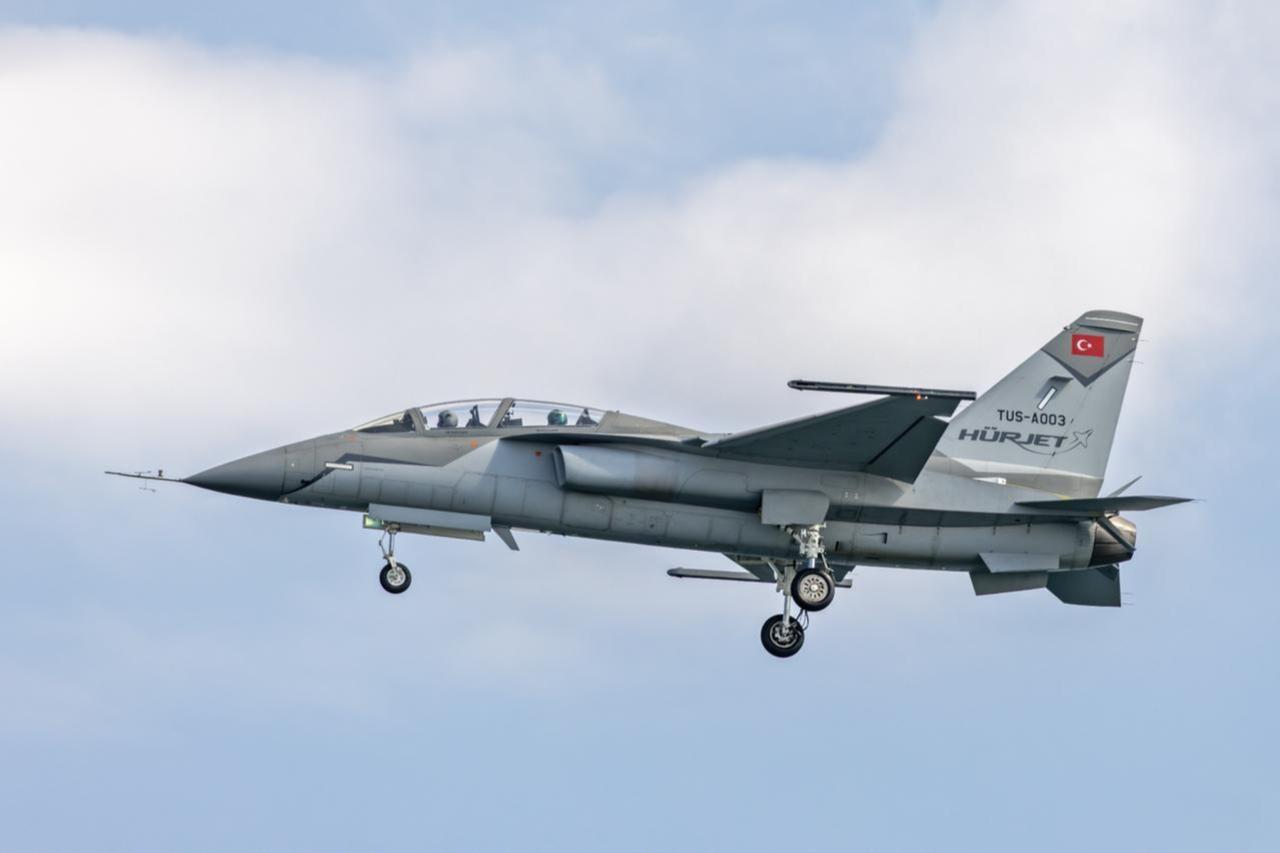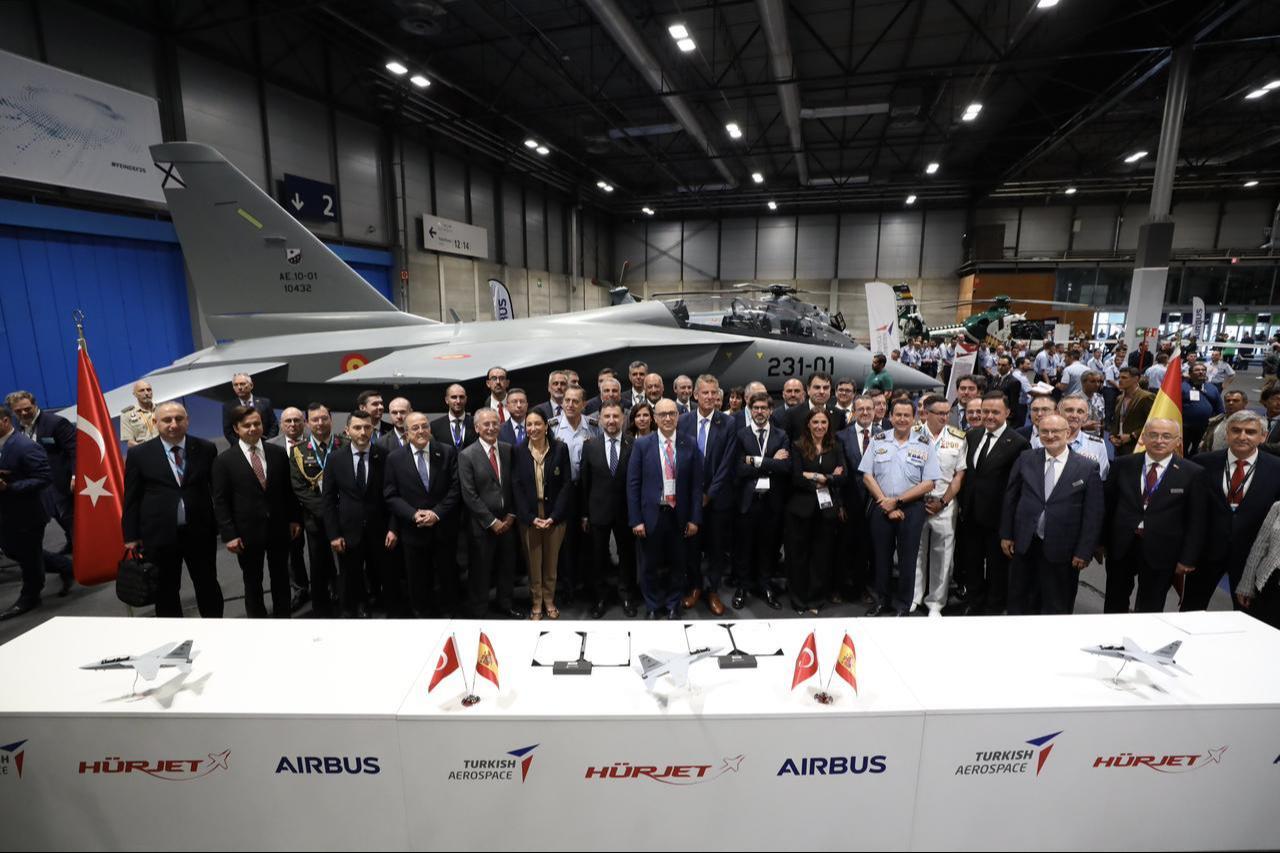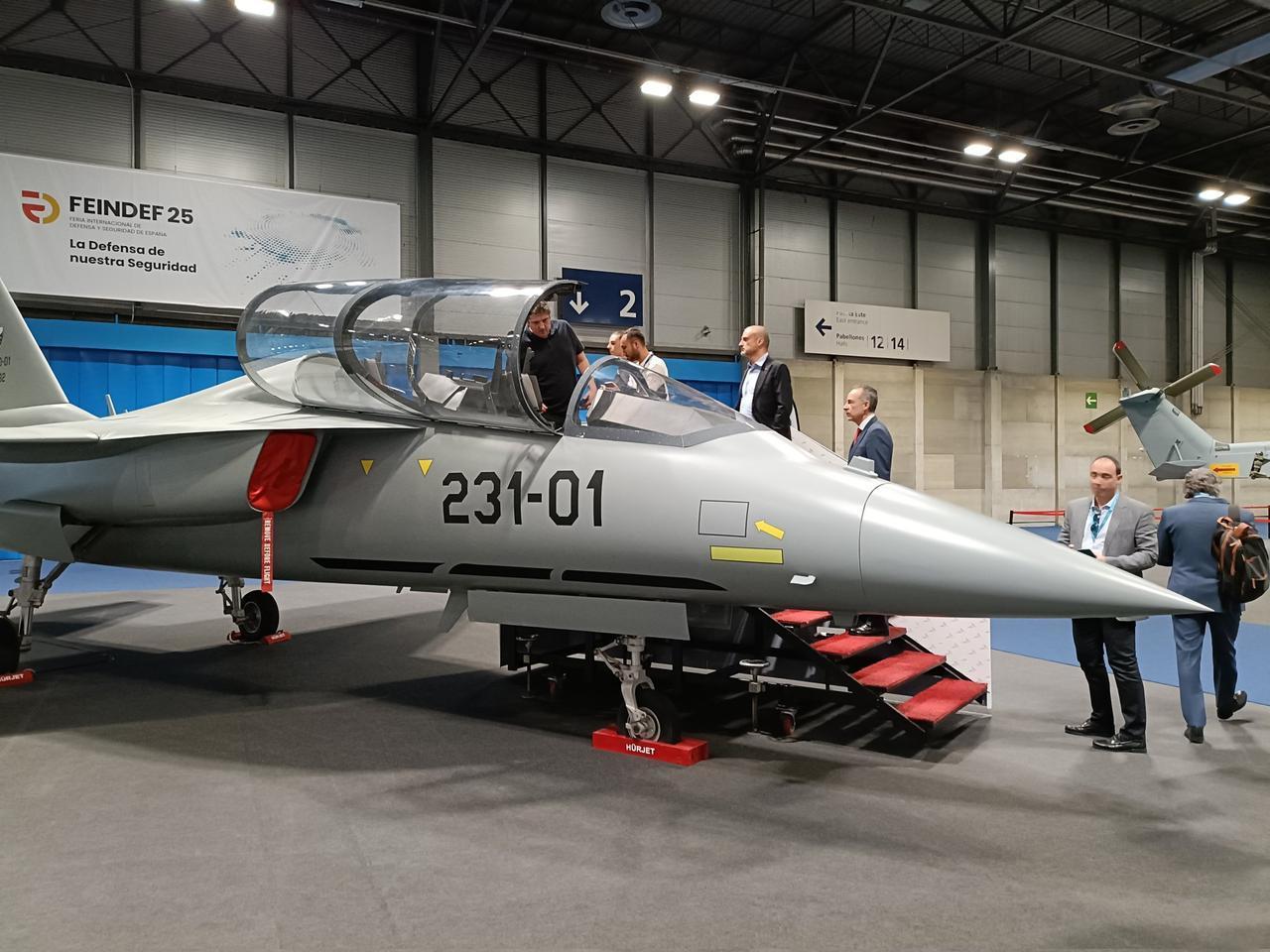
Türkiye's indigenous jet trainer aircraft Hurjet has successfully obtained Design Organization Approval (DOA) and Production Organization Approval (POA) certificates from the European Union Aviation Safety Agency (EASA), marking a significant milestone in the aircraft's international certification journey, Defense Industries President Haluk Gorgun announced Wednesday.
The certifications recognize Turkish Aerospace Industries' (TAI) capability to design and manufacture aircraft according to European standards, positioning Hurjet as a viable competitor in the international military trainer market alongside platforms like Italy's Leonardo M-346 and South Korea's KAI T-50.
"Our unique child of the skies, Hurjet, has successfully passed another strategic threshold in its certification journey," Gorgun said on a social media platform.
"The Design Organization Approval (DOA) and Production Organization Approval (POA) documents represent the international standard certification of our national aviation vision," he noted.

Gorgun emphasized the broader significance of this achievement beyond its technical aspects.
"This achievement is not merely a technical success; it is also a historic step toward independent skies," he stated.
"The jet trainer of the future will carry the mark of our national engineering on tomorrow's battlefield. With the prayers of our dear nation, the sweat of our engineers, and the cooperation of our institutions, we will continue to work with determination for a fully independent future in our skies," Gorgun noted.
The DOA certification confirms that a company possesses the necessary processes, engineering infrastructure, and quality management systems to design aircraft and aircraft components while obtaining certification for these designs.
The POA, also granted by EASA, covers the production aspect, demonstrating that a company can manufacture designed parts or aircraft in compliance with international quality and safety standards.

Hurjet is a single-engine, supersonic advanced jet trainer and light attack aircraft equipped with state-of-the-art avionics, including the Murad-type AESA radar.
The aircraft has been specifically designed to meet the training requirements for fourth and fifth-generation fighter jet pilots.
Thanks to its high performance and advanced avionics capabilities, Hurjet plays a critical role in pilot training programs. The aircraft features a user interface designed to minimize the transition period to fifth-generation jets, serving as an ideal training solution to prepare young pilots for the challenges of modern fighter aircraft.
The certification news holds particular significance for Spain, which confirmed its acquisition of Hurjet as a replacement for its aging F-5M aircraft based in Talavera just two months ago during Türkiye's IDEF 25 defense fair.
The Spanish acquisition forms part of a comprehensive industrial agreement involving major companies including Indra and Airbus Spain. The deal, valued at €1.375 billion ($1.614B), represents a complete modernization of the Spanish Air Force's training assets, complementing earlier acquisitions of Swiss Pilatus aircraft.
The possibility of manufacturing or assembling Hurjet systems on Spanish soil, along with the integration of Spanish national technology into the aircraft, opens unprecedented opportunities for direct aeronautical industrial cooperation between Spain and Türkiye at an unprecedented level of intensity and depth.
In July, Turkish Aerospace Industries signed a partnership agreement with Airbus to accelerate Hurjet exports, further strengthening the aircraft's position in the global market.
The EASA certifications are essential prerequisites for any manufacturer seeking to offer aircraft in the European market and are mandatory for authorizing exports to EU member states or NATO countries operating under EASA regulations.
For TAI, the EASA certification establishes Hurjet not only as a viable option for more countries but as a technically and normatively homologated alternative in the European market.